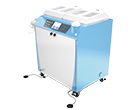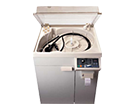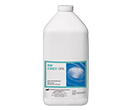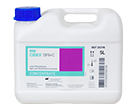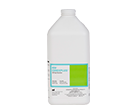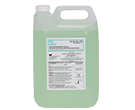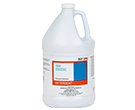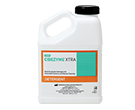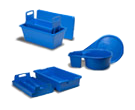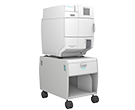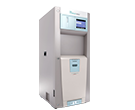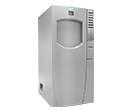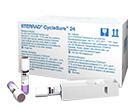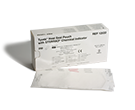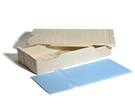ASP Media
Got Laryngoscopes? Get Answers with the ASP Hot Topic Webisodes!
in this Webisode, we will look at the issue of what to do with anesthesia laryngoscope blades when it comes to reprocessing them. We will give an overview of the new standards issued by the Joint Commission and then discuss practical solutions, based on the application of the standards.
First, the CDC’s Healthcare Infection Control Practices Advisory Committee known as (HICPAC) classifies laryngoscope blades as “semicritical” items. “Semicritical” items are defined as “items that directly or indirectly contact mucous membranes of the respiratory tract. They should be sterilized or subjected to high-level disinfection before reuse.”
On October 24, 2011, The Joint Commission issued a new standards-related FAQ addressing the processing and storing of laryngoscope blades in perioperative-care settings, and following on November 3, AORN informed its members of the new standards-related FAQ.
What did the FAQ say and what does it mean for you? The FAQ emphasizes that Joint Commission surveyors will evaluate processes related to laryngoscope blades to ensure that they are safe for use on the next patient. This will include checking that laryngoscope blades are processed properly, either with sterilization or with high-level disinfection, and packaged and stored in such a way that would prevent recontamination.
The FAQ stated that the CDC’s 2008 Disinfection & Sterilization Guideline does not address the issue of packaging, however an earlier standard does have a specific recommendation which states that appropriate rinsing, drying and packaging is strongly recommended and supported by well-designed experimental, clinical or epidemiologic studies.
While appropriate packaging is recommended, it is important to note that HICPAC guidelines do not specify the manner in which laryngoscope blades should be packaged, only that the packaging prevent recontamination.
According to the Joint Commission, compliant methods of storage include, but are not limited to: a peel pack post-steam sterilization for long-term, or wrapping in a sterile towel for short-term. Noncompliant methods include storing unwrapped blades in an anesthesia drawer or on top of a code cart.
Because laryngoscope handles are considered contaminated after use, they must also be processed prior to use on the next patient. Many manufacturers suggest a low-level surface disinfectant be utilized on the surface of the handle, but check your manufacturer’s indications for use (IFU) as processes vary by manufacturer. In addition, some state laws require additional processing, so check your state for any additional applicable laws or regulations.
Okay, now that we have looked at the new standards and guidance from the Joint Commission, let’s talk about practical solutions and best practices to the proper reprocessing, packaging and storage of your laryngoscope blades.
From our perspective the best option for reprocessing your laryngoscope blades is through terminal sterilization, such as STERRAD® Technology, where you can use a peel pack for visibility.
In addition, reprocessing should always be done in the sterile processing department or operating room/sub-sterile core. It’s also a good practice to make sure your staff is educated on processing reusable medical devices, including those outside the sterile processing department, such as nurses and physicians.
An alternate option is to process the blades using high-level disinfectant and rinse with demineralized water. Then dry the devices completely, package securely and store until they are ready for use.
Additionally, remember to disinfect or sterilize battery handles and always clean the battery charger stands, as it can be exposed to dust and bacteria. It is not recommended to store blades for the long term (states in previous page can store for short term in sterile towel) in absorbable materials, such as towels. Also, remember not to store blades wet in a sealed pouch or container.
The STERRAD® Systems from ASP help you address changing standards like this one and be more prepared to pass Joint Commission surveys. All of ASP’s STERRAD® Systems are equipped to terminally sterilize laryngoscope blades using a peel pack for visibility. As always, please reference the device manufacturers’ IFU for processing instructions.
ASP STERRAD® Systems are approved to process a number of other reusable medical devices, such as
fiberoptic laryngoscopes, optical stylets, flexible intubation endoscopes and video intubation endoscopes.
As a STERRAD® Systems customer, you can conveniently check the STERRAD® Sterility Guide (or SSG), a frequently updated, easy-to-use online tool designed to help you identify which devices fall within STERRAD® Systems cleared claims for sterility. The guide can be accessed on your computer or smartphone at www.sterradsterilityguide.com. For more information on dev ices cleared for reprocessing in STERRAD® Systems, please contact the Medical Device Manufacturer’s Program at ASP at mdmprogram@its.jnj.com .
AD-12005-01-US_A
First, the CDC’s Healthcare Infection Control Practices Advisory Committee known as (HICPAC) classifies laryngoscope blades as “semicritical” items. “Semicritical” items are defined as “items that directly or indirectly contact mucous membranes of the respiratory tract. They should be sterilized or subjected to high-level disinfection before reuse.”
On October 24, 2011, The Joint Commission issued a new standards-related FAQ addressing the processing and storing of laryngoscope blades in perioperative-care settings, and following on November 3, AORN informed its members of the new standards-related FAQ.
What did the FAQ say and what does it mean for you? The FAQ emphasizes that Joint Commission surveyors will evaluate processes related to laryngoscope blades to ensure that they are safe for use on the next patient. This will include checking that laryngoscope blades are processed properly, either with sterilization or with high-level disinfection, and packaged and stored in such a way that would prevent recontamination.
The FAQ stated that the CDC’s 2008 Disinfection & Sterilization Guideline does not address the issue of packaging, however an earlier standard does have a specific recommendation which states that appropriate rinsing, drying and packaging is strongly recommended and supported by well-designed experimental, clinical or epidemiologic studies.
While appropriate packaging is recommended, it is important to note that HICPAC guidelines do not specify the manner in which laryngoscope blades should be packaged, only that the packaging prevent recontamination.
According to the Joint Commission, compliant methods of storage include, but are not limited to: a peel pack post-steam sterilization for long-term, or wrapping in a sterile towel for short-term. Noncompliant methods include storing unwrapped blades in an anesthesia drawer or on top of a code cart.
Because laryngoscope handles are considered contaminated after use, they must also be processed prior to use on the next patient. Many manufacturers suggest a low-level surface disinfectant be utilized on the surface of the handle, but check your manufacturer’s indications for use (IFU) as processes vary by manufacturer. In addition, some state laws require additional processing, so check your state for any additional applicable laws or regulations.
Okay, now that we have looked at the new standards and guidance from the Joint Commission, let’s talk about practical solutions and best practices to the proper reprocessing, packaging and storage of your laryngoscope blades.
From our perspective the best option for reprocessing your laryngoscope blades is through terminal sterilization, such as STERRAD® Technology, where you can use a peel pack for visibility.
In addition, reprocessing should always be done in the sterile processing department or operating room/sub-sterile core. It’s also a good practice to make sure your staff is educated on processing reusable medical devices, including those outside the sterile processing department, such as nurses and physicians.
An alternate option is to process the blades using high-level disinfectant and rinse with demineralized water. Then dry the devices completely, package securely and store until they are ready for use.
Additionally, remember to disinfect or sterilize battery handles and always clean the battery charger stands, as it can be exposed to dust and bacteria. It is not recommended to store blades for the long term (states in previous page can store for short term in sterile towel) in absorbable materials, such as towels. Also, remember not to store blades wet in a sealed pouch or container.
The STERRAD® Systems from ASP help you address changing standards like this one and be more prepared to pass Joint Commission surveys. All of ASP’s STERRAD® Systems are equipped to terminally sterilize laryngoscope blades using a peel pack for visibility. As always, please reference the device manufacturers’ IFU for processing instructions.
ASP STERRAD® Systems are approved to process a number of other reusable medical devices, such as
fiberoptic laryngoscopes, optical stylets, flexible intubation endoscopes and video intubation endoscopes.
As a STERRAD® Systems customer, you can conveniently check the STERRAD® Sterility Guide (or SSG), a frequently updated, easy-to-use online tool designed to help you identify which devices fall within STERRAD® Systems cleared claims for sterility. The guide can be accessed on your computer or smartphone at www.sterradsterilityguide.com. For more information on dev ices cleared for reprocessing in STERRAD® Systems, please contact the Medical Device Manufacturer’s Program at ASP at mdmprogram@its.jnj.com .
AD-12005-01-US_A
Playlist
-

Got Laryngoscopes? Get Answers with the ASP Hot Topic Webisodes!
in this Webisode, we will look at the issue o...
-

Introducing: The Redesigned STERRAD® Sterility Guide that’s SMART!
Introducing the new STERRAD® Sterility Guide...
-

ASP Hot Topic Webisode: Drying Medical Devices Prior to Sterilization
Many healthcare professionals have questions ...
-

What You Need to Know About The Updated SGNA Guidelines - Webisode 5
...
-

What You Might Not Know about Meeting High-Level Disinfection Training Guidelines.
Barbara Trattler, RN, MPA, CNOR, NE-BC Direc...
-

How Am I Supposed to Clean and Sterilize My Devices?
In this Webisode we will address one of the m...

